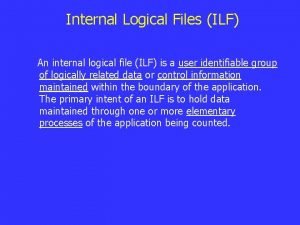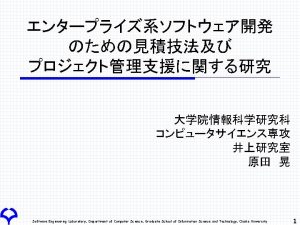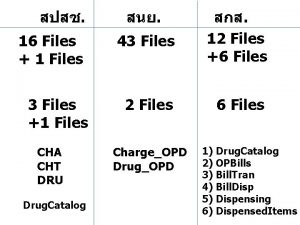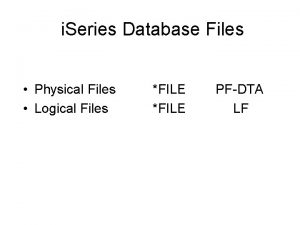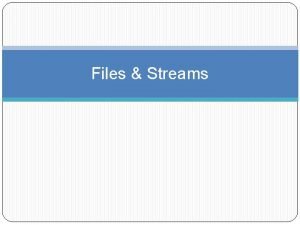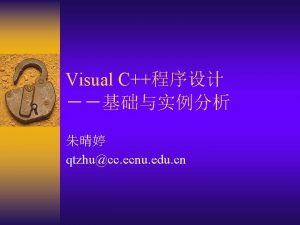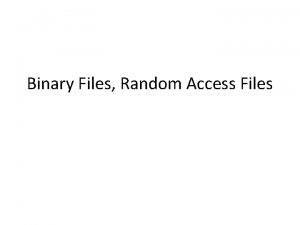Internal Logical Files ILF An internal logical file













- Slides: 13

Internal Logical Files (ILF) An internal logical file (ILF) is a user identifiable group of logically related data or control information maintained within the boundary of the application. The primary intent of an ILF is to hold data maintained through one or more elementary processes of the application being counted.

Software Engineering II Lecture 10 Fakhar Lodhi

Recap

External Interface Files An external interface file (EIF) is a user identifiable group of logically related data or control information referenced by the application, but maintained within the boundary of another application. The primary intent of an EIF is to hold data referenced through one or more elementary processes within the boundary of the application counted. This means an EIF counted for an application must be in an ILF in another application.

External User External Input (EI) External Output (EO) Inquiry (EQ) Internal Logical File (ILF) External Interface File (EIF) External Input External Output Application Boundary Other Applications

User Identifiable The term user identifiable refers to defined requirements for processes and/or groups of data that are agreed upon, and understood by, both the user(s) and software developer(s). For example, users and software developers agree that a Human Resources Application will maintain and store Employee information in the application.

Control Information is data that influences an elementary process of the application being counted. It specifies what, when, or how data is to be processed. For example, someone in the payroll department establishes payment cycles to schedule when the employees for each location are to be paid. The payment cycle, or schedule, contains timing information that affects when the elementary process of paying employees occurs.

Elementary Process An elementary process is the smallest unit of activity that is meaningful to the user(s). For example, a user requires the ability to add a new employee to the application. The user definition of employee includes salary and dependent information. From the user perspective, the smallest unit of activity is to add a new employee. Adding one of the pieces of information, such as salary or dependent, is not an activity that would qualify as an elementary process.

Complexity and Contribution Definitions and Rules • DETs - A data element type is a unique user recognizable, non-repeated field. • RETs - A record element type (RET) is a user recognizable subgroup of data elements within an ILF or EIF.

RET Subgroups of data • Optional – the user has the option of using one or none of the subgroups during an elementary process that adds or creates an instance of the data. • Mandatory – the user must use at least one.


Application Boundary • System Context diagram. • Determines the scope of the count. • Indicates the border between the software being measured and the user.

Summary of Today’s Lecture
 Internal logical file
Internal logical file Cjis meaning
Cjis meaning File mode python
File mode python Cjis training
Cjis training Ilf eif
Ilf eif Difference between logical file and physical file
Difference between logical file and physical file File-file yang dibuat oleh user pada jenis file di linux
File-file yang dibuat oleh user pada jenis file di linux Logical operators equivalence
Logical operators equivalence Logical equivalence in discrete mathematics
Logical equivalence in discrete mathematics Remote file access in distributed file system
Remote file access in distributed file system What does a markup tag tells the web browser
What does a markup tag tells the web browser In a file-oriented information system, a transaction file
In a file-oriented information system, a transaction file Fungsi sistem file
Fungsi sistem file Internal logical framework
Internal logical framework
